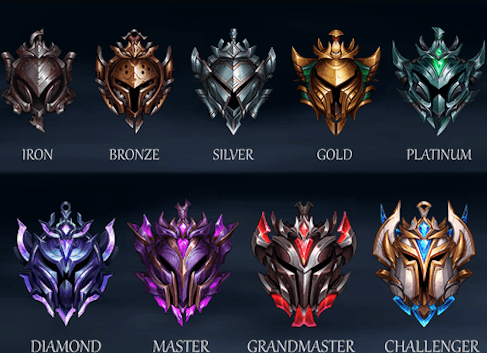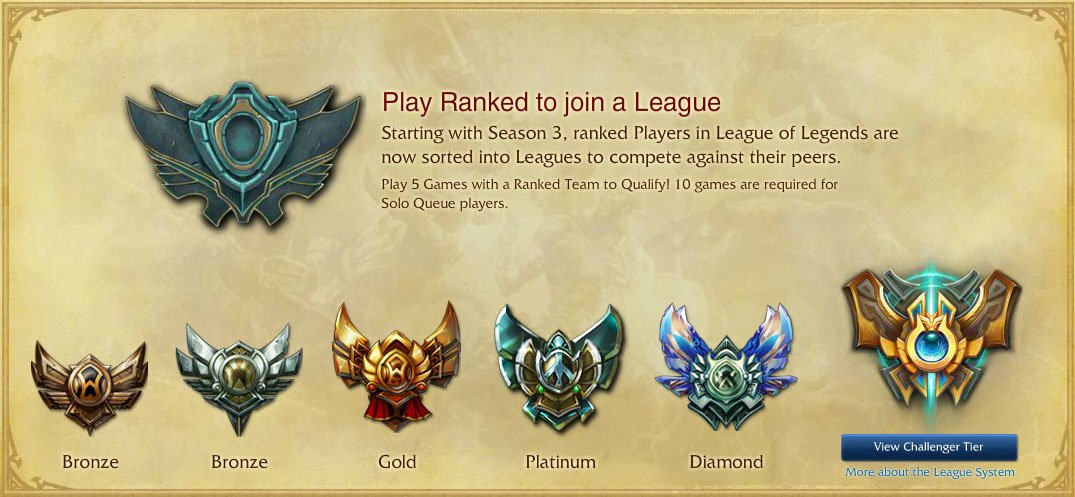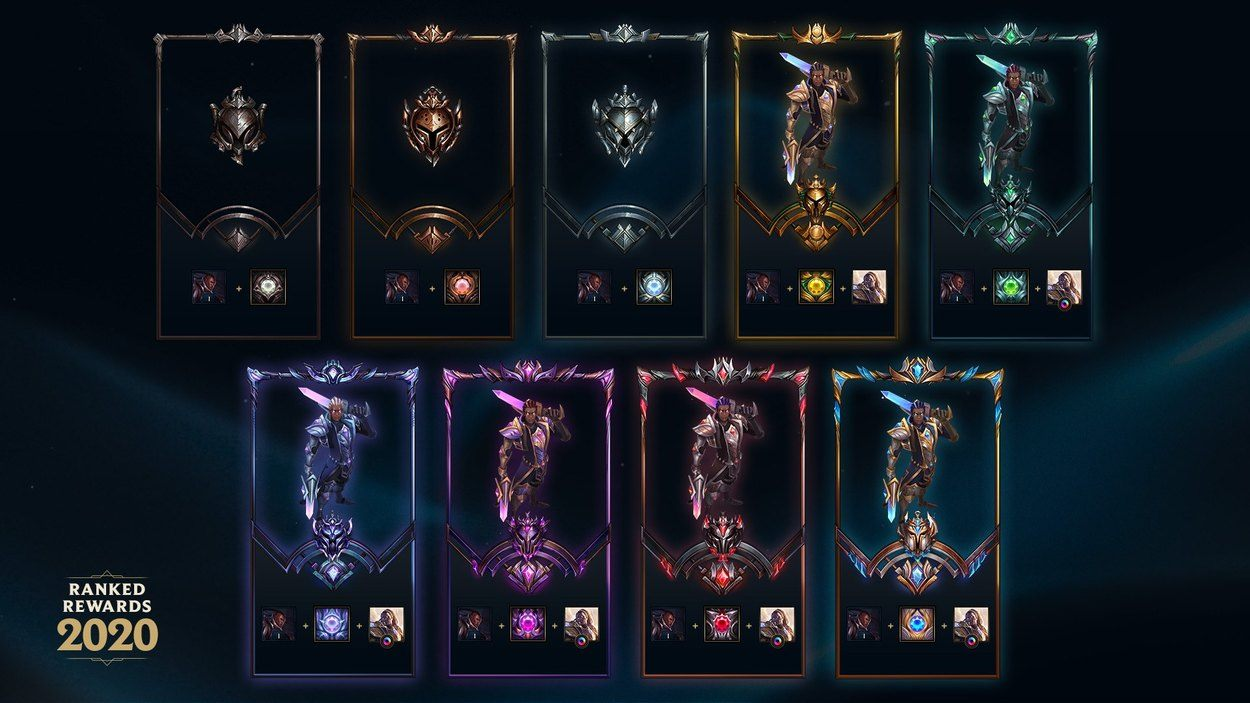An In-Depth Ranked Guide for League of Legends: Everything You Need To Know
Ready to queue up for Ranked LoL? This guide will have everything you need to know to start on your journey to Challenger!
Ready to queue up for Ranked LoL? This guide will have everything you need to know to start on your journey to Challenger!
Many players ask questions of how to win, who to play and what to build, but let’s bring it back to basics for a moment. League of Legends’ ranked system is one that has evolved over time in an attempt to try and find a balance between the satisfaction of victory and the bitter taste of defeat and allocate a rank to the player accordingly. In preseason 11, there are still many players that have yet to fully grasp the mechanics underlying the League of Legends ranked ladders. As such, it’s about time we break it down so you can dominate the mental game as well as the mechanical one.
In order to play Ranked League of Legends, you must meet certain criteria. The two requirements to queue up for Ranked are:
Ranked League of Legends is played in the Draft Pick format, meaning players may ban champions from their match before anyone can pick them, and then proceed to choose their champions in a certain order (disallowing mirror matchups). This system differs to the traditionally Normal format of Blind Pick, where players choose whichever champion they please with no bans and the potential for mirror matchups. Players must own at least 20 champions This makes for a more competitive style of Champ Select, so that each game can feel fresh and dynamic.
Currently, there are two different Ranked modes in League of Legends: Ranked Solo/Duo and Ranked Flex. The difference between these two modes is the number of players that can queue up together; Flex can take parties of up to 5 (excluding teams of 4) and Solo/Duo can take parties of 2 (except for at Master and above, which forces solo queue). These two ladders are independent from each other, meaning a Challenger Solo/Duo player can be Bronze in Flex if they don’t play that mode (or are really, really unlucky).

While they are separate ladders they do deal in the same system of LP, or League Points, to determine the ranks of players. Within each ladder, there are 9 ranks (Iron, Bronze, Silver, Gold, Platinum, Diamond, Master, Grandmaster and Challenger) each containing 4 divisions (IV, III, II and I) which players will first be assigned to after completing a provisional period of 10 matches. Once your initial rank and division has been achieved, you will begin gaining and losing LP as normal; when you hit 100 LP, you qualify for a promotional series to reach the next division within your tier. If you drop to 0 LP, you will (usually) have a chance to bounce back before being demoted depending on your MMR, but we'll talk about that later.
Promotional Series, or promos, make for some of the most intense League of Legends gameplay you’re likely to experience. There are two different types of promos, depending on what you’re promoting to. The first is the most common series, a best of 3 that you’ll play when promoting from division to division (e.g. Bronze III to Bronze II), and the second is a best of 5 that is played instead when promoting to a new rank (e.g. Bronze to Silver). It’s important to note that during your promos, leaving a match in champ select counts as an automatic loss, so prepare for anything when queuing up!
We’ve all heard about terms such as MMR and Elo, but what do they actually mean and how do they affect the player? Let’s start simply, as these concepts can be a little overwhelming to take in all at once and fully grasp.
Elo refers to the rating system developed by Arpad Elo for use in competitive chess, and prior to Season 3 was also the rating system used in ranked League of Legends. In essence, the system attributes a number to the player based on their performance, and that number would increase and decrease after winning and losing; a high Elo placed you at the top of the ranked ladders, while a low one would have the inverse effect. This also impacted the quality of players you were matched against, so that you could most accurately play against opponents that were roughly at your skill level. This system was replaced by the tier-based LP system that exists at current, but the term “Elo hell” remains to refer to the low ranks that are occupied by players that are more toxic and less skilled than the average player, which is said to have a subsequent effect on everyone they play with.

MMR stands for Matchmaking Rating and is the hidden factor behind the amount of LP you gain for a win and lose after a defeat. The simplest way to understand MMR is by considering it as where the ladder thinks you actually belong; a good MMR means that the game expects you to be ranked higher than you are, and a bad MMR means the game thinks you’re out of your depth. This is calculated by considering a few different elements of your results in ranked, most notably:
Your MMR is important when trying to climb as you’re likely to find a quicker path to the top if your matchmaking rating is high. Aside from winning, there is no obvious way to improve your MMR, but there are a few tips and tricks you can implement to conserve your MMR. Firstly, become conscious of your mental state, and take a break if you believe you’re starting to tilt. Secondly, don’t be afraid to dodge in Champ Select and take a minor penalty to your LP if your team is obviously trolling; there’s no point spending 15+ minutes with a team that doesn’t want to win when you could just try again after a dodge and find a more confident group of players.
This is a very simple question, with a fairly complicated series of answers. Many players, both old and new, might wonder “why ranked?” Firstly, the competitive nature of the game is demonstrated to a greater extent than in normal matches; the logic behind this for many players is that in normal games, the motivation to try hard to win is not as great as it is in Ranked when there is a rank and LP on the line. This reserves a special kind of respect for the Ranked Ladders (in the eyes of most players), leaving 1st time play and preliminary learning experiences for Normal or Bots games.
The second reason is a little more exciting. At the end of each season, there are a number of ranked rewards that are redeemable by players that reach certain milestones in the Ranked ladders. To exemplify this, see the image below for the 2020 ranked rewards, including the Victorious Lucian skin and a chroma for each rank above Gold you attain.

Lastly, League of Legends is growing every day in the world of high-level competitions. Many professional players are discovered/recognised firstly by their exceptional performance in the Ranked ladders, and grinding your way to the top can find you in the sights of professional teams that are trying to expand their roster/s. By playing at the heights of the Ranked Ladders of League of Legends and growing as a player, you can take a shot at making it in the world of professional gaming… a dream for many players!
So there you have it; with all of this knowledge, what’s stopping you from queuing up and dominating today? Well, it’s really not that simple, but that’s the beauty of the game! Learning the process is the first of a series of baby steps to growing into a League of Legends powerhouse, however we hope that you will achieve your goals and dominate the Ranked scene using this knowledge as a starting point. GLHF!